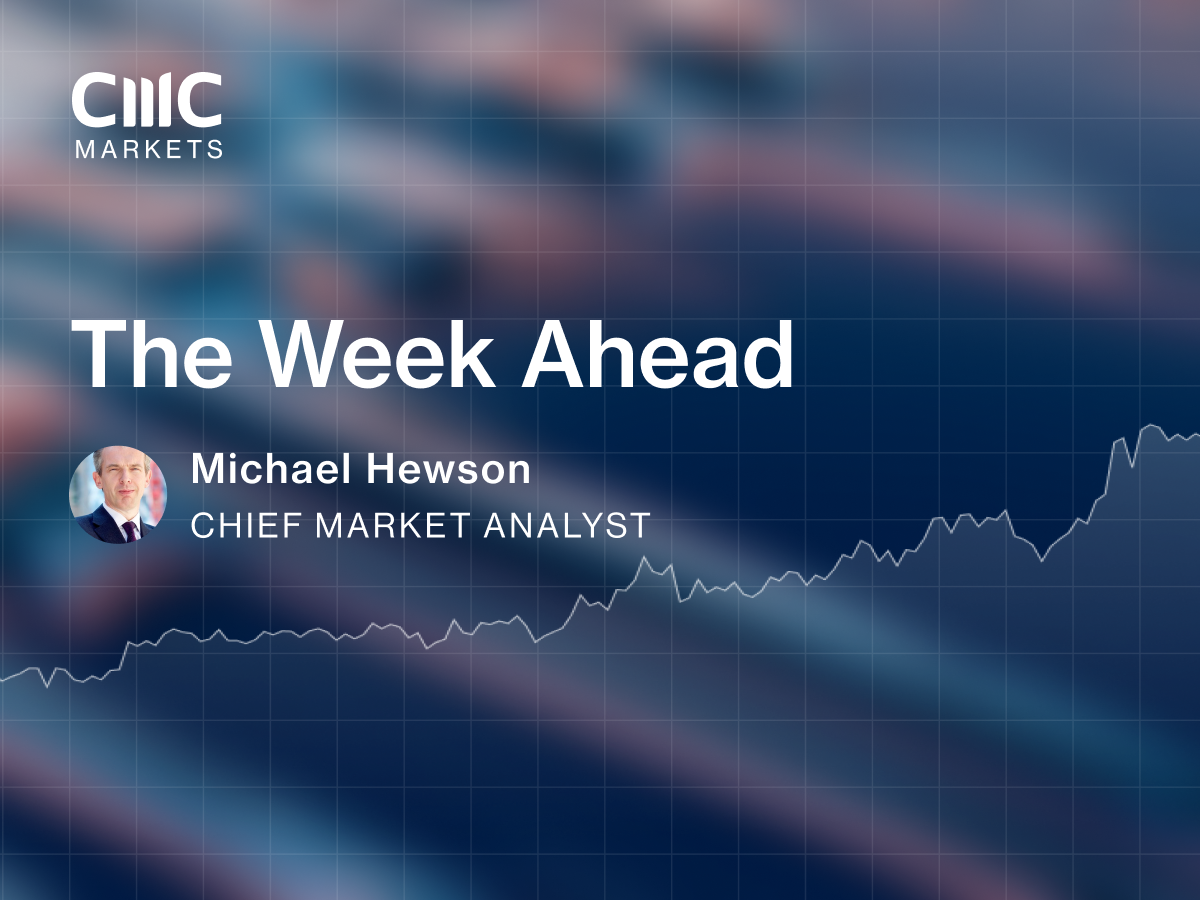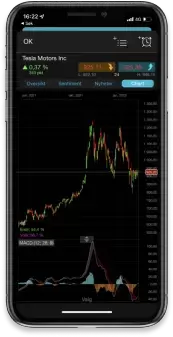Here’s our pick of the top three economic and company events in the week commencing Monday, 8 January:
US CPI (December)
Thursday 11 January: The annual rate of consumer price growth in the US slowed to 3.1% in November, easing from 3.2% a month earlier. With producer price inflation also slowing – to 0.9% year-on-year in November, down from 1.2% in October – markets have been hoping that the US Federal Reserve may cut interest rates in 2024, perhaps before the end of March. However, Fed officials have poured cold water on those expectations. Although the US economy is performing well, the argument for an early rate cut seems difficult to justify while inflation remains above the Fed’s 2% target. If the consumer price inflation print for December shows a sharp drop, it could fuel calls for a rate cut in the first quarter of the year; if, however, inflation remains sticky, the timeline for a rate cut could be pushed to later in the year. Consensus estimates for the December inflation reading point to a slowdown to 3%, though some estimates are forecasting 3.3%.
Marks & Spencer Q3 results
Thursday 11 January: Marks & Spencer was one of the FTSE 100’s standout performers in 2023, its shares soaring 120% over the course of the year. The stock, which was promoted back to the UK’s leading share index last summer, is now at its highest level in five years. The gains came as strong growth in profits boosted investor sentiment toward the retailer. M&S reported that its profit before tax in the first half of the year rose 56.2% to £325.6m on the back of a 10.8% rise in statutory revenue, which came in at £6.13bn. The food division stood out, with like-for like sales up 11.7%, while in general merchandising like-for-like sales rose 5.5%. The company also strengthened its balance sheet, returning to positive free cash flow and reducing net debt by £370m. The restoration of the dividend was a milestone that investors welcomed, although it was only 1p. Management warned that the second half of the year was likely to be a more difficult period, given higher interest rates, concerns about a slowing economy, deflationary forces impacting consumer sentiment, and an uncertain geopolitical outlook. The upcoming Q3 numbers could therefore be a mixed bag. While food sales are expected to have been strong, general merchandise might prove to be a drag.
UK GDP (November)
Friday 12 January: The UK economy shrank by 0.3% month-on-month in October, more than reversing the 0.2% expansion in September. All sectors of the economy struggled during the month, with a larger-than-expected 0.8% fall in industrial and manufacturing production, while construction output fell 0.5% amid a spell of wet weather. The service sector contracted by 0.2%. The data meant that the UK economy delivered 0% growth in the three months to October. Despite this, the Bank of England has given little sign of a pivot on monetary policy, saying that monthly GDP figures are subject to a lot of ebb and flow. The November numbers are expected to show a modest rebound in economic output.
Here's our pick of the week's other notable economic and company events:
J Sainsbury Q3 results
Wed 10 Jan: The last three months have seen Sainsbury’s reinforce its position as the UK’s second biggest supermarket behind Tesco. Data from Kantar show that Sainsbury’s has increased its market share to 15.6%. For the 12 weeks to 26 November, the supermarket grew its sales by 10.2%, with this week’s pre-Christmas trading numbers expected to show continued resilience as consumers prioritise food and drink. However, customers’ eschewing of higher-priced discretionary items may negatively impact the company’s Argos numbers. With grocery price inflation trending at 9%, Sainsbury’s has been aggressively promoting its Nectar promotions, similar to how Tesco has pushed its Clubcard offers. These special offers have helped stem the loss of business to the likes of Aldi and Lidl. There has been talk that the Competition and Markets Authority is looking at supermarkets’ loyalty card promotions to ensure they aren’t misleading consumers on price. Nonetheless, Sainsbury’s shares have been performing well in recent months, rising to 22-month highs in December after the company upgraded its full-year profit guidance towards the upper end of £670m to £700m, with retail free cash flow upgraded from £500m to £600m
Tesco Q3 results
Thu 11 Jan: The Tesco share price has made steady gains over the past 12 months. While it has lost some market share during this period, it remains way out in front as the UK’s leading supermarket by market share. Tesco raised its guidance in October, saying it was optimistic about maintaining the same level of adjusted operating profit as last year, despite the ongoing pressure on margins. The company expects retail free cash flow to continue to be in the region of £1.4bn to £1.8bn. All areas of the business appear to be performing well, with the Booker wholesale arm delivering a 7.5% increase in sales, which came in at £4.7bn. The only laggard was the central European division, where like-for-like sales grew just 0.9%. Tesco’s average basket size rose by 5.2% to £98 – a level of growth that is below underlying food price inflation, indicating that the supermarket is absorbing some of the costs of higher prices. Full-year profit is expected to come in at between £2.6bn and £2.7bn, with retail free cash flow of between £1.8bn and £2bn, up from the previous estimate of between £1.4bn and £1.8bn.
JPMorgan Chase Q4 results
Fri 12 Jan: JPMorgan appears to have set itself apart from the rest of the US banking sector in terms of both its share price and financial performance. The bank reported record revenues in the first two quarters of last year. The collapse of Silicon Valley Bank saw JPMorgan win over $50bn of new deposits as it took over the regional bank’s deposit base. The turmoil in rates markets also proved to be a boon as revenues surged in both Q1 and Q2. In the second quarter saw revenue hit $42.04bn, blowing through expectations of $39.34bn, as profit came in at $14.5bn, or $4.75 a share – an increase of 67% from a year ago. The bank also raised its guidance for full-year net interest income (NII) to $87bn, as the gap between loans and deposit margins widened. In Q3 the bank upgraded its NII guidance to $89bn after it posted revenue of $40.69bn, a solid beat, and a profit of $13.2bn, or $4.33 a share. By business segment, investment banking and FICC (fixed income currency and commodities) both outperformed, though equities came up short of expectations, while the addition of SVB added $1.5bn to NII. After the release of the Q3 results, the JPMorgan share price slipped to four-month lows. Since then, however, we’ve seen a sharp turnaround, with the shares taking out the July peaks to rise to their best levels since January 2022. For Q4, revenue is expected to come in at $40.12bn, taking total revenue for the year to $162.33bn. Profit for Q4 is expected to be $3.63 a share.
Wells Fargo Q4 results
Fri 12 Jan: Wells Fargo shares have performed well over the past three months, rebounding strongly from their October lows as the US economy remained resilient. In December the shares hit their best levels since April 2022 as investor confidence returned following last year’s regional banking crisis, which sent shockwaves through the sector. In Q2 Wells Fargo reported that overall lending was slowing as higher rates started to bite into US consumer spending. Total average loans came in below expectations at $945.9bn, while provision for credit losses came in at $1.71bn, a big increase from last year’s $580m. For Q3 provisions were expected to total $1.35bn, but came in lower at $1.2bn. Q3 revenue came in at $20.86bn, which was higher than expected, while profit was also better than expected at $1.48 a share. The improvement came because of higher interest rates, with net interest income rising to $13.11bn. Total average loans came in short of forecasts at $943.2bn. For Q4, revenue is expected to come in at $20.29bn, pushing total revenue for the year to $82.5bn. Quarterly profit is forecast to come in at $1.15 a share.
Citigroup Q4 results
Fri 12 Jan: While shares of JPMorgan and Wells Fargo have rebounded strongly, taking out their summer highs and rising above the levels that predated the March sell-off, the Citigroup share price has lagged as CEO Jane Fraser strives to turn around a bank that has struggled with an unwieldy management structure and higher costs. The bank shed 5,000 jobs last year, with more layoffs to come. In Q2, operating expenses rose 9% to $13.57bn, with credit losses rising 77% to $1.5bn. In Q3 revenue came in $900m above expectations at $20.14bn, while profit came in at $1.63 a share. However, some areas of the business continued to struggle. The equities division, like JPMorgan’s, came up short, delivering $918m in revenue. Also notable was lower than expected operating expenses of $13.51bn, a rise of 6%, which was a smaller increase than in Q2. The bank said it expected to see credit losses increase in Q4. Full-year revenue guidance was kept unchanged at between $78bn and $79bn, though Citigroup did raise its forecast for full-year NII to $47.5bn, up from $46bn. For Q4, revenue is expected to come in at $18.97bn, while profit is forecast to be lower at $0.95 a share. Full-year revenue is expected to rise to $79.7bn, but annual profit looks set to come in lower at $5.96 a share.
INDEX DIVIDEND SCHEDULE
Dividend payments from an index's constituent shares can affect your trading account. View this week's index dividend schedule.
SELECTED COMPANY RESULTS
| Monday 8 January | Results |
| Accolade (US) | Q3 |
| Helen of Troy (US) | Q3 |
| Tuesday 9 January | Results |
| Acuity Brands (US) | Q1 |
| Albertsons (US) | Q3 |
| Games Workshop (UK) | Half-year |
| MSC Industrial Direct (US) | Q1 |
| WD-40 (US) | Q1 |
| Wednesday 10 January | Results |
| J Sainsbury (UK) | Q3 |
| KB Home (US) | Q4 |
| Thursday 11 January | Results |
| Knights Group Holdings (UK) | Half-year |
| Marks & Spencer (UK) | Q3 |
| Tesco (UK) | Q3 |
| Friday 12 January | Results |
| Bank of America (US) | Q4 |
| Bank of New York Mellon (US) | Q4 |
| BlackRock (US) | Q4 |
| Citigroup (US) | Q4 |
| Delta Air Lines (US) | Q4 |
| JPMorgan Chase (US) | Q4 |
| UnitedHealth Group (US) | Q4 |
| Wells Fargo (US) | Q4 |
Note: While we check all dates carefully to ensure that they are correct at the time of writing, company announcements are subject to change.
Disclaimer: CMC Markets is an execution-only service provider. The material (whether or not it states any opinions) is for general information purposes only, and does not take into account your personal circumstances or objectives. Nothing in this material is (or should be considered to be) financial, investment or other advice on which reliance should be placed. No opinion given in the material constitutes a recommendation by CMC Markets or the author that any particular investment, security, transaction or investment strategy is suitable for any specific person. The material has not been prepared in accordance with legal requirements designed to promote the independence of investment research. Although we are not specifically prevented from dealing before providing this material, we do not seek to take advantage of the material prior to its dissemination.




